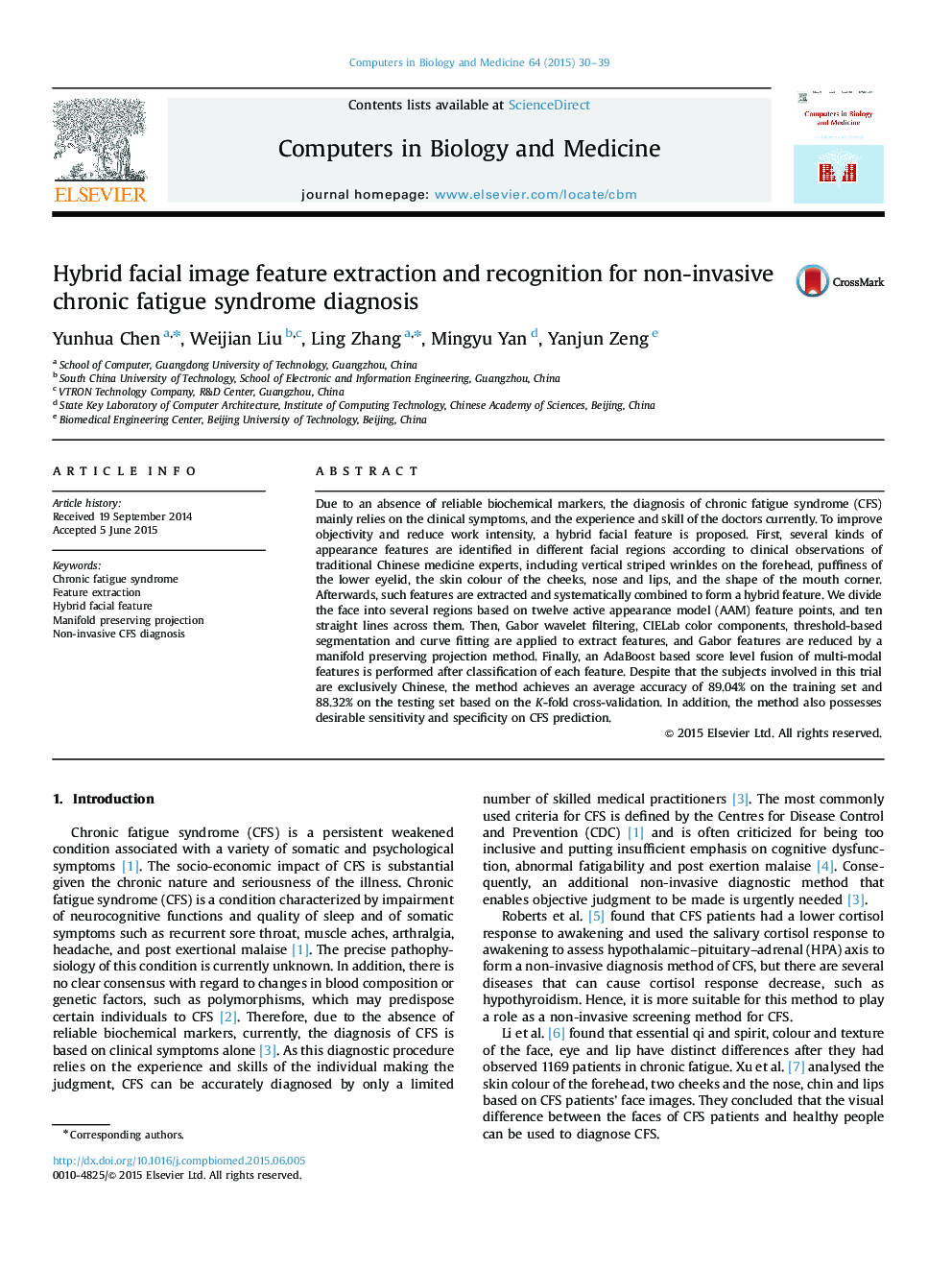| Article ID | Journal | Published Year | Pages | File Type |
|---|---|---|---|---|
| 504873 | Computers in Biology and Medicine | 2015 | 10 Pages |
•We proposed a hybrid facial feature based on clinical observations of TCM experts.•Feature components are extracted from different facial regions with proper methods.•Feature reduction and fusion are performed before prediction of CFS.•The feature got an error rate less than 17.31% in cross-validation experiments.•The whole method achieves an average accuracy of 88.32% for CFS prediction.
Due to an absence of reliable biochemical markers, the diagnosis of chronic fatigue syndrome (CFS) mainly relies on the clinical symptoms, and the experience and skill of the doctors currently. To improve objectivity and reduce work intensity, a hybrid facial feature is proposed. First, several kinds of appearance features are identified in different facial regions according to clinical observations of traditional Chinese medicine experts, including vertical striped wrinkles on the forehead, puffiness of the lower eyelid, the skin colour of the cheeks, nose and lips, and the shape of the mouth corner. Afterwards, such features are extracted and systematically combined to form a hybrid feature. We divide the face into several regions based on twelve active appearance model (AAM) feature points, and ten straight lines across them. Then, Gabor wavelet filtering, CIELab color components, threshold-based segmentation and curve fitting are applied to extract features, and Gabor features are reduced by a manifold preserving projection method. Finally, an AdaBoost based score level fusion of multi-modal features is performed after classification of each feature. Despite that the subjects involved in this trial are exclusively Chinese, the method achieves an average accuracy of 89.04% on the training set and 88.32% on the testing set based on the K-fold cross-validation. In addition, the method also possesses desirable sensitivity and specificity on CFS prediction.
